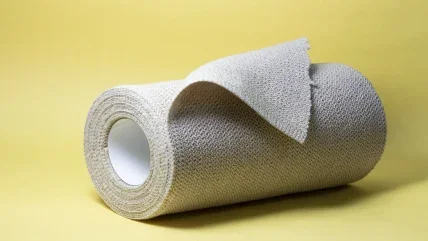
What is the most significant challenge in your wound care practice?
Rosalyn Thomas: The most significant challenge in wound care – particularly with patients living with diabetes – is effective local wound care, which includes infection control, offloading the ulcerated area, ensuring the vascular status is addressed if suboptimal and – for those patients living with diabetes specifically – achieving target blood glucose levels. Addressing smoking cessation and nutritional deficiencies are also a challenge.
Managing exudate with the most appropriate dressing, without disturbing the wound with frequent dressing changes, is another factor in optimising wound healing. Another challenge is persuading the budget holders to invest in purchasing more costly interventions that in the long term will prove both cost-saving and life-saving.
In your clinical opinion, what makes a patient suitable for topical oxygen therapy and Granulox in particular?
A patient who has peripheral arterial disease would benefit from applying topical oxygen therapy to an indolent ulcer as there is reduced blood supply, hence a diminished flow and perfusion into the tissues. Other patients would be those that are anaemic or not suitable for revascularisation with slow or stagnant wounds.
As you work in an acute setting, how do your patients get access to Granulox regularly? Is it mainly through repeat visits to the clinic or can it also be administered in the community?
Patients deemed suitable for wound treatment with Granulox could be issued a can at the clinic appointment. Canisters of Granlox are small, and easy to transport for use in and between a variety of different care settings. Indeed, treatment could be continued at each dressing change, whether or not that is at the wound clinic, with a practice nurse or self-administered by a patient able and competent to redress their wound themselves. On returning to our clinic at the acute site, the patients would bring this can of Granulox with them.
“Using Granulox reduces the regularity of clinical visits due to the ease of use and frequency of application. This improves patients’ quality of life as they are not tied to a daily or twice daily visit for a wound dressing.”
What is the clinical impact of using Granulox?
Using Granulox reduces the regularity of clinical visits due to the ease of use and frequency of application. This improves patients’ quality of life, as they are not tied to a daily or twice daily visit for a wound dressing.
What feedback have you had from patients you’ve treated with Granulox? How else does it affect their quality of life?
Patients whose wounds have been treated with Granulox have been less depressed as their slow-healing wounds show improvement in a short time, which enthuses them to continue with the treatment. The patients find Granulox easy to use, with no discomfort or trauma when applied.
What economic benefits are there to using topical oxygen therapy?
The product cost may be justified by lower morbidity, improved outcomes, fewer lower extremity amputations and improved patient mobility, particularly if these wounds have not improved using standard wound care interventions, and infections and other underlying causes have been ruled out.
Has Granulox helped address the challenges you face as a healthcare provider? Could it help with your most significant one?
Chronic wounds that are ischaemic and non-healing are a significant burden on the healthcare service, and also debilitating and frustrating for the patients. Granulox has shown to improve outcomes for this type of patient, who are at high risk of amputation.





